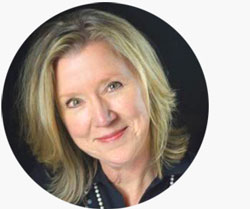GETTING CLEAR…Steven’s Story
#2 in the series
Steven came reluctantly to the coaching suite. A 15-year manager, he was accustomed to being on top of his facility and making things happen. With a solid production record, Steven provided stable leadership and demonstrated the requisite technical skill. His leadership team had a good mix of talent and worked together with a minimum of fuss. And still, there was that letter…..
Some disgruntled employees skipped up the chain and wrote a complaint that got corporate attention. In a letter signed by three associates, Steven was charged with failing to communicate in a variety of ways. Employees felt they were not being heard, that Steven did not consistently follow up with their concerns, and that he was not open to the ideas and opinions of others at the facility.
Reaction to the letter from top management was swift. The issue was quickly passed to HR, along with the directive that something was to be done, and soon. Steven was notified of the existence of the letter, a standard procedure when any kind of complaint came in. In short, he was stunned. Never in his career had any substantive complaints been levied against him. Steven neither agreed with the charges, nor understood the perspective expressed. But he did take the situation seriously. Very seriously.
As he discussed the situation with HR, Steven was introduced to the idea of using coaching to address his performance issue. Could that really help? Unsure of whether he even had a performance issue, Steven agreed to give it a try. The plan was to work with a coach over the next three months to address his communication skill gap. Although he readily agreed, he was clueless as to how that might work.
Shortly thereafter, Steven entered the CLARITY5 coaching suite for the first time. He met his coach and checked out Suite 10 where the actual work would be done. He saw the large blank panels hung on the wall and questioned within himself if they could ever be filled up. Steven also wondered what all this had to do with what he was going through back at the facility, where he was much more at home. He was about to find out.
Led by his coach, Steven studied the models explaining how the Results Accelerator™ tool works. He reviewed the graphical representation of a Results System™ and saw that the results we get each day are based on conscious and unconscious choices. It made sense to him that our behaviors are affected by beliefs, habits, assumptions and perceptions. Steven was beginning to explore what was going on with his own results system above and below the surface. Funny, he would much rather break down a piece of malfunctioning equipment.
Long term goals were the official starting point as Steven’s coach picked up a marker and began to record his answers to the structured query. What would you like for your life to look like twenty years from now? Steven’s view of the distant future included an emphasis on family, community and financial stability. He also looked to the future to offer opportunities for travel, keeping fit, and working in his shop.
When asked about short term goals, the issue at hand surfaced. More effective communications was goal number one. Other immediate goals centered around documentation, response to inquiry, and meeting management. Each goal was anchored by a start or completion date. A plan was starting to emerge.
The remaining section of the goals panel posed a single question: What do you want today from this process? Steven quickly supplied two responses. The first was CHANGE. He wanted to make some changes. And second? He wanted to BE HAPPY. Steven revealed that he had felt less than completely satisfied and fulfilled in recent years in his work. Could this ‘forced’ period of reflection and discovery bring Steven into a different relationship with his work environment? Could it increase his worklife satisfaction and improve his performance as well? Could this coaching opportunity bring CLARITY?
By the time Steven and his coach had worked through his panels, some significant insights emerged. Steven recognized that he was leading from his outdated childhood models, and that was not working for him. He also saw that he was checking his preferred communication style at the door every morning, in favor of a more mock-serious style which, again, was not working for him. Thirdly, he found a new leadership role model from which to operate and initiate more authentic, effective interactions.
Steven did the work and HE made the changes he sought. Following the Gandhi’s advice he was able to ‘Be the change he wished to see in the world’. The metrics 6 months later validated those changes. First clarity, then action. Good work, Steven!
#2 in the series




Leave a Reply
Want to join the discussion?Feel free to contribute!